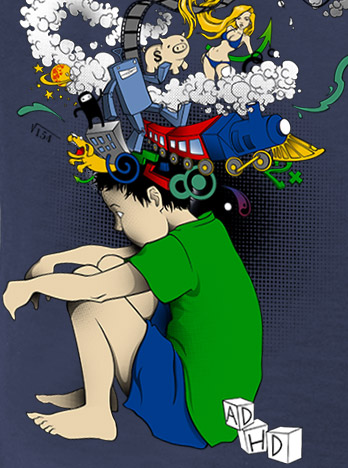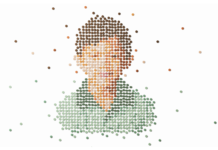In an article recently published in the New England Journal of Medicine, a team of researchers out of Boston led by Dr. Timothy J. Layton sought to determine the extent to which birth month affects patterns of attention deficit-hyperactivity disorder (ADHD) diagnosis. To do so, they examined the medical records of 407,846 students born between 2007 and 2009 in the Truven Health MarketScan Research Database.

They found significant differences between diagnosis trends among students with August birthdays (among the youngest in their class cohorts) and students with September birthdays (among the oldest) in schools with arbitrary September 1st kindergarten entry cutoffs. Their analysis also revealed broadening discrepancies with age, and no significant differences in asthma, diabetes, or obesity rates according to birth month as a point of comparison. Additionally, of students with an ADHD diagnosis, those with August birth months received an average of 120 more days of treatment according to prescription records compared to those with September birth months.
Layton and team begin their article by outlining some controversial features of ADHD as a diagnostic category. Past research has found geographic variation in diagnosis patterns, a recent and substantial surge in prevalence, and that one of the primary features of the presentation of ADHD in childhood is a discrepancy between a child’s behaviors as a student compared to that of same-aged peers. Self-control, organization, and attentiveness are qualities valued in schools, and when student behavior deviates from externally imposed expectations, it may be easier to attribute this deviation to within-child processes than to larger contextual issues.
“Some evidence suggests that teachers or school personnel are more likely than parents or physicians to first suggest a diagnosis of ADHD,” the researchers write. “In the classroom setting, teachers and parents may presume that all children should behave in a similar manner; therefore, behavior that appears to be anomalous relative to the behavior of other children in the same peer group stands out.”
Poor sleep quality, birth month relative to peers, diet, and digital media use are just a few examples of the contextual factors that have been linked to ADHD diagnosis. The likelihood of receiving a diagnosis varies tremendously across primary care practices throughout the US, and there are disparities in diagnosis patterns across gender, racial, and ethnic groups.
Children are more likely to be classified as having ADHD once in school, and stimulant medication is the most common form of treatment for ADHD-type behaviors. Given the potential for side effects associated with pharmacological interventions and the implications of a diagnosis on a student’s self-concept, Layton and team’s contributions are timely.
The popular (yet somewhat arbitrary) September 1st cutoff for month-of-birth applied in 18 states means that students with August and September birthdays belonging to the same academic cohort may be nearly an entire year apart in age. The authors hypothesized that teachers, clinicians, and parents may inaccurately pathologize developmental differences associated with age and that ADHD diagnoses would be assigned at disproportionately high rates among children with summer birthdays.
In addition to comparing trends between the oldest and youngest students, ages four to seven, in states with September 1st cutoffs, Layton and team compared month-to-month differences in diagnosis rates across all other consecutive pairs of months. As previously noted, they also looked at prescription patterns within the sample over time, differences in diagnosis patterns over time by age (i.e., September and August birthday differences in diagnosis among four-year-old children vs. seven-year-old students). Finally, they analyzed differences in other common diagnoses to evaluate the presence of any other September to August differences.
“We found that in states with an age cutoff at September 1 for kindergarten entry, children born in August were significantly more likely to receive a diagnosis of ADHD than children born in September,” they write. “Furthermore, children in these states who were born in August were more likely than children born in September to receive medical treatment for ADHD. The demographic and clinical characteristics were similar in August-born and September-born children and in their parents.”
In states with a September 1st cutoff, children with August birthdays were 34% more likely than children with September birthdays to be diagnosed with ADHD, and treatment occurred at a 32% higher rate for children with August birthdays among those diagnosed. No significant differences were detected in the consecutive month pairings, nor between September and August birthdays in states without the September 1st rule.
Although similar trends have been identified in past research with older data, survey responses, and in other countries, Layton and colleagues’ work is current and United States-specific. Their use of healthcare trends derived from an insurance database removes the limitation of recall bias associated with survey data and has implications for healthcare providers, educators, parents, and ultimately, the students of the United States.
****
Layton, T. J., Barnett, M. L., Hicks, T. R., & Jena, A. B. (2018). Attention Deficit–Hyperactivity Disorder and Month of School Enrollment. New England Journal of Medicine, 379(22), 2122-2130. (Link)















Grown adults, ganging up and attacking little children; then defaming the children with “invalid” DSM disorders.
https://www.nimh.nih.gov/about/directors/thomas-insel/blog/2013/transforming-diagnosis.shtml
So they may “torture” the children, by forcing them to take mind altering, neurotoxic drugs that are chemically identical to cocaine, is deplorable. All children are forced to take their “medicine.”
http://www.narpa.org/reference/un-forced-psychiatric-treatment-is-torture
The psychiatrists didn’t learn from their mistakes in Nazi Germany, or Bolshevik led Russia – other than to change the word “eugenics” to the word “genetics” – and they are destroying America, and seemingly hell bent on destroying the entire world.
https://www.youtube.com/watch?v=7kUpMecbv8g
And they’ve brainwashed not just millions of “mental health professionals,” but also the mainstream medical community, school teachers, religious leaders, and much of our population with their DSM lies. It is disgusting that the material world only believing, all distress is caused by a “chemical imbalance” in the brain, bio-bio-bio DSM “bible” is being taught in our once Spirit led seminary schools today.
And the number one actual function of the “mental health professionals” in our society today, and historically, is profiteering off of covering up child abuse. Today’s psychiatrists are doing this by turning millions and millions of child abuse survivors into the “seriously mentally ill” with the psychiatric drugs.
https://www.madinamerica.com/2016/04/heal-for-life/
https://en.wikipedia.org/wiki/The_Freudian_Coverup
https://www.alternet.org/story/146659/are_prozac_and_other_psychiatric_drugs_causing_the_astonishing_rise_of_mental_illness_in_america
https://en.wikipedia.org/wiki/Neuroleptic-induced_deficit_syndrome
https://en.wikipedia.org/wiki/Toxidrome
The DSM “bible” is actually designed to function as a child abuse covering up system, since it doesn’t allow any “mental health professional” to ever bill any insurance company for ever helping any child abuse survivor, without first misdiagnosing them with the billable DSM disorders. It’s so disgusting and downright evil, it’s almost unbelievable.
https://www.psychologytoday.com/us/blog/your-child-does-not-have-bipolar-disorder/201402/dsm-5-and-child-neglect-and-abuse-1
And, of course, all of this “mental health industry” child abuse covering up does aid, abet, and empower the child abusers and child traffickers. So we now live in a society controlled by “satanic pedophiles” and “human traffickers.”
https://globalfreedommovement.org/putin-blasts-euro-western-culture-of-pedophilia-and-satanism/
https://www.nytimes.com/2018/04/11/us/backpage-sex-trafficking.html
https://www.youtube.com/watch?v=-nzi2avrKDg
And what is one of the saddest parts of this is that “the two original educated professions,” our doctors and religious institutions, do not want to get out of the business of turning millions and millions of child abuse survivors into the “seriously mentally ill” with the psychiatric drugs, because “it’s just to profitable.”
Unfortunately, I live in a disgusting world. Shame on “the two original educated professions” and their multibillion dollar, primarily child abuse covering and profiteering, industries. I dealt with a medical/religious, real life “conspiracy” to cover up of the abuse of my child, which was actually just a part of a nationwide, systemic medical/religious “conspiracy” to silence all of the child abuse survivors in this nation. This betrayal of our society’s “weakest members,” by our medical and religious industries, is satanic. How do we put an end to this “dirty little secret of the two original educated professions”?
Report comment
“Growing Evidence for the Link Between ADHD Diagnosis and Birth Month”
In other news, there is growing evidence for the link between the Easter Bunny’s hopping patterns and the phases of the moon.
Report comment
Would these two people pass the test for ADHD
https://en.m.wikipedia.org/wiki/Jack_Ma
https://en.m.wikipedia.org/wiki/Michael_O%27Leary_(businessman)
Report comment
I started this “ADHD” thread and got over 3000 views so far. I put links to MIA in the thread to get us more readers.
“Why does only America drug so many school children ?” Read more: http://www.city-data.com/forum/education/2995094-why-does-only-america-drug-so.html
I was banned from the forum for speaking out of course but the thread continues. It needs help. Please sign up and post on it, thanks.
Report comment
Good work as always. Still looking for a non-FB way to dialogue “privately.”
Report comment
Sign up !
Here is the last post right now
“I am curious as to how much profit pharmaceutical companies make off of medications whose patents have expired. Most every medication used to treat ADHD is off-patent now. Is there still a large profit to be made off these medications?”
Here is how I would reply
With patent extension up for grabs, Shire agrees to test Vyvanse in preschoolers https://www.fiercepharma.com/regulatory/patent-extension-up-for-grabs-shire-agrees-to-test-vyvanse-preschoolers
Report comment
LOL fierce pharma took away the comment section.
I had wrote in the comments to test the brain poison on the Shire CEOs grandchildren first.
Report comment
I’m very curious as to why “antidepressants” are being agressively pushed in the UK even though they are off patent.
Report comment
I think you might have hurt their feelings. Just because they’re big, powerful, and sociopathic doesn’t mean they don’t have feelings, you know.
Report comment
Sign up !
I meant with YOU. 🙂
Report comment
So did you get banned just for the MIA links?
Report comment
So anyway — this is sort of like astrology, in other words?
Report comment
Yeah, like, totally, Aries are MUCH more likely to get “ADHD” diagnoses because they’re a fire sign, you know, because fire is like, TOTALLY moving all the time…
Report comment
But isn’t Pisces more spaced out?
Also if Mercury was retrograde that month they might be more introverted.
Report comment
Pisces is more likely to get the “ADD without hyperactivity” kind of diagnosis, unless Taurus was rising at birth, or the moon sign is an earth sign. It’s all very specific, in a general sort of way, most of the time, anyway.
Report comment
I have just the drug for that!!!
Report comment
I heard about this study on a podcast. The idea is that the younger children are more likely to get the diagnosis because they’re less mature, less developmentally equipped for the challenges of school. It’s black magic voodoo like all psych research, but I guess that hypothesis is more acceptable than some pseudoscience about the kids’ brains being defective.
Report comment
I think it proves unequivocally that the “diagnosis” itself is utterly subjective, and that a huge percentage of kids who are “diagnosed” are simply later in maturing and would be just fine if they were left alone and allowed to grow up.
Report comment
I find the title misleading, though. It should really say the link is between school admission age and “ADHD” diagnosis. The month appears only to be relevant when it’s the month where they draw the arbitrary line between admitting to school one year vs. the next.
Honestly, astrology would be just as legitimate a way of diagnosing people, though. Maybe better, because at least being a Virgo doesn’t imply there is something wrong with you.
Report comment
Sexual repression maybe?
Report comment
Virgo = anal retentive 😀
Report comment
I don’t think that’s a psychiatric diagnosis, is it? Maybe we can call Virgos “Obsessive-Compulsive” and leave it at that. I mean, what’s the point if you can’t prescribe a drug for it?
Report comment
Agreed about the title Steve. A little more precision in wording would make for a clearer understanding for the majority of folks who only read headlines. Since this will be spread around social media where that trend is ubiquitous, it would be smart to be as precise in headline as possible.
Report comment
We could probably correlate a diagnosis with each month, then make bracelets where you gradually collect them all. Maybe MIA could sell them to raise funds.
I used to like astrology simply because it encouraged sensitivity to the complexities (and subtleties) of people’s personalities rather than all the superficial chatter.
Report comment